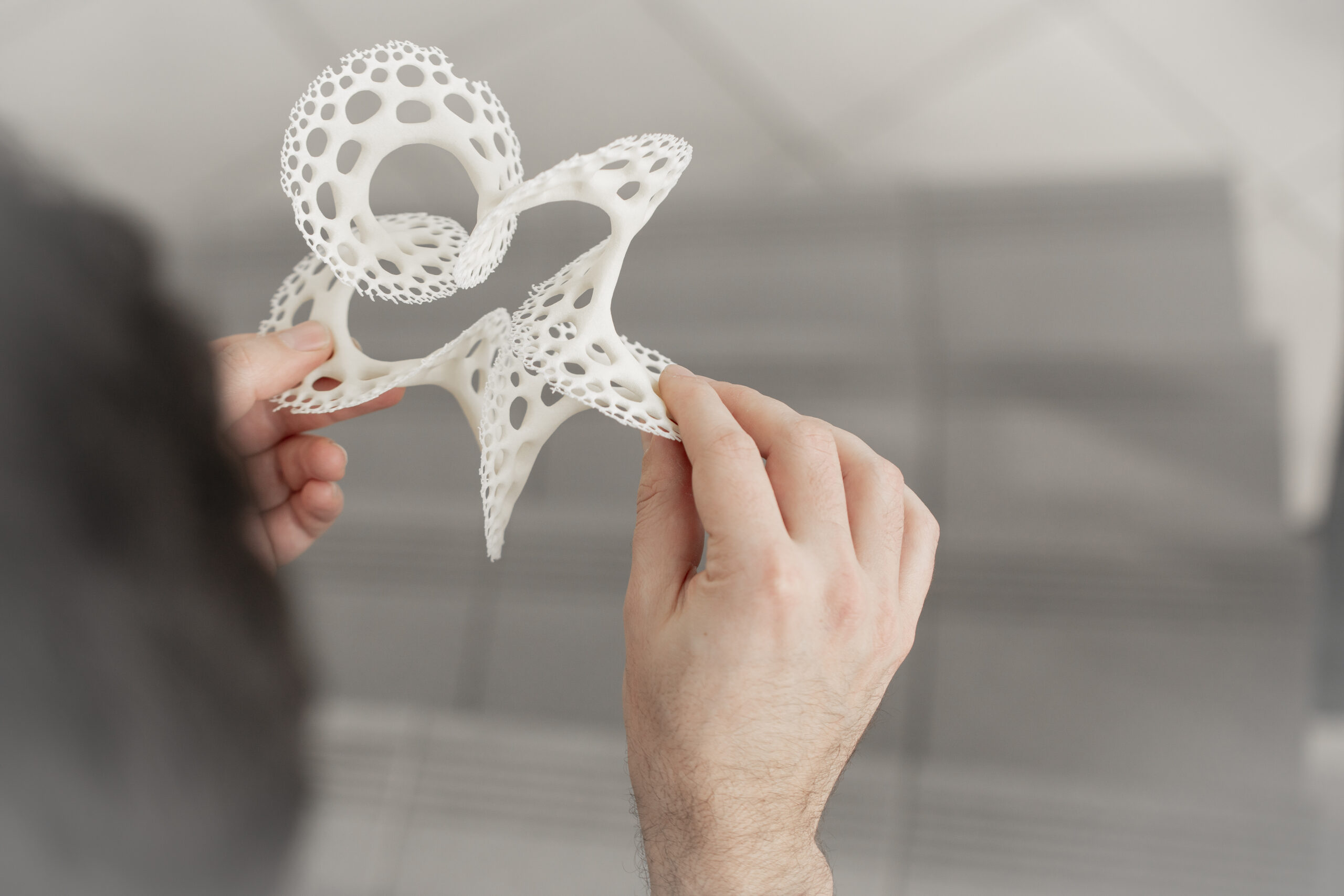As many additive manufacturing (AM) users and engineers know, material science is just as important as the industrial 3D printing technology itself. Both work in tandem to help manufacturers reach unprecedented prototyping and production capabilities, and without one, the other cannot succeed. AM material development and continued innovation is integral to the widespread adoption of industrial 3D printing and has many growth opportunities in its future.
Sustainability
As manufacturers using AM materials and those who manufacture the material itself continue to strive towards more responsible manufacturing business practices, finding ways to reduce the collective carbon footprint is a large topic of discussion. Applications using polymer materials such as Nylon 12, a material made with petroleum, are being swapped for Nylon 11, a material made from 100% renewable castor beans. Bio-based materials like Nylon 11 retain chemical and mechanical traits to Nylon 12, while also providing manufacturers a climate neutral option and a reduction in overall carbon footprint.

Manufacturers using metal materials, that produce toxic waste during production, are exploring ways to increase the recyclability of metal powders, and how to improve the vacuum ancillary equipment to not only save usable material but decrease the amount of waste produced per build. Conversations and business decisions such as these will continue to grow, as well as manufacturers examining the overall lifecycle of products to find new ways of reducing the impact of AM on the environment.
Industry applications driving material design
As new industries continue to take interest and adopt industrial 3D printing, more demand is being put on materials to provide the capabilities needed for specific, advanced applications. Industries such as drone manufacturing have brought an increased need for lightweight, strong, and electrostatic discharge (ESD) polymer materials. Industries like consumer electronics manufacturers need customized materials as well, those with the ability to be printed in fine detail resolution (FDR), while also adhering to fire-resistant (FR) and ESD requirements.

Metal materials are seeing an increasing demand for solutions with high-corrosion resistance properties. These materials need to withstand extreme chemical exposure, whether that be in a nuclear plant or laboratory, or at the bottom of the ocean within a submarine. Designing materials that can withstand these specific environments opens the door for industries that previously were limited to traditional manufacturing methods because of the materials used.
Building the AM material portfolio
Although the polymer and metal AM material portfolios are quite extensive and have continued to grow throughout the years, there is still a demand for a material portfolio that matches the traditional. For many manufacturers, they are not interested in changing the material of an application, so if that material is not available for AM, they are not going to make the switch. If AM can match the portfolios, and even exceed that of traditional manufacturing, there is a strong, competitive case for industrial 3D printing adoption.
Overall, material development will continue to be an integral part of AM success and widespread adoption. The future of AM depends equally on the innovation of technology hardware and material science and will continue to dictate the manufacturing adoption for industries across the board.
If you are interested in learning more about material development and how it can shape the manufacturing landscape, watch the on-demand webinar, 3D Printing: It’s About the Materials with Dr. Gregory Hayes, EOS senior vice president of global Additive Minds and Preston Souza, igus, inc. additive manufacturing product manager. The webinar touches on the developments and challenges of 3D printing materials, as well as what drives innovation in AM material science. Watch the on-demand webinar today to dive deeper into the key that material science holds on AM engineering innovation.
Subscribe to Our Email Newsletter
Stay up-to-date on all the latest news from the 3D printing industry and receive information and offers from third party vendors.
Print Services
Upload your 3D Models and get them printed quickly and efficiently.
You May Also Like
Creality To Go Public
Creality is one of the largest 3D printing companies in the world. It probably ships more 3D Printers than anyone else. In a competitive market, the company has gone from...
Why Align Technology’s Slowdown Still Matters to 3D Printing
Align Technology (Nasdaq: ALGN), the company behind Invisalign clear aligners, reported lower-than-expected results for the second quarter of 2025. While the slowdown is tied to broader economic and dental industry...
Zhejiang University Researchers Potentially Develop Sustainable Closed Loop Resins
Zhejiang University researchers have come up with a thrilling discovery that could make resins much more sustainable. In a paper for Science, “Circular 3D printing of high-performance photopolymers through dissociative...
Carlsmed to Go Public in $101 Million Bid to Scale 3D Printed Spine Implants
Carlsmed is preparing to go public. The med-tech company, based in Carlsbad, California, plans to offer 6.7 million shares at a price range of $14 to $16 per share, which...





























